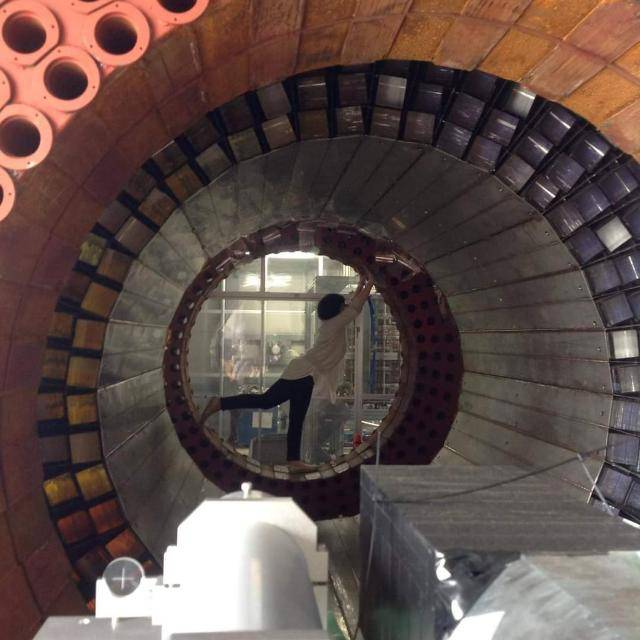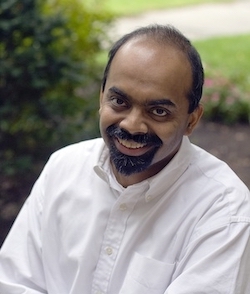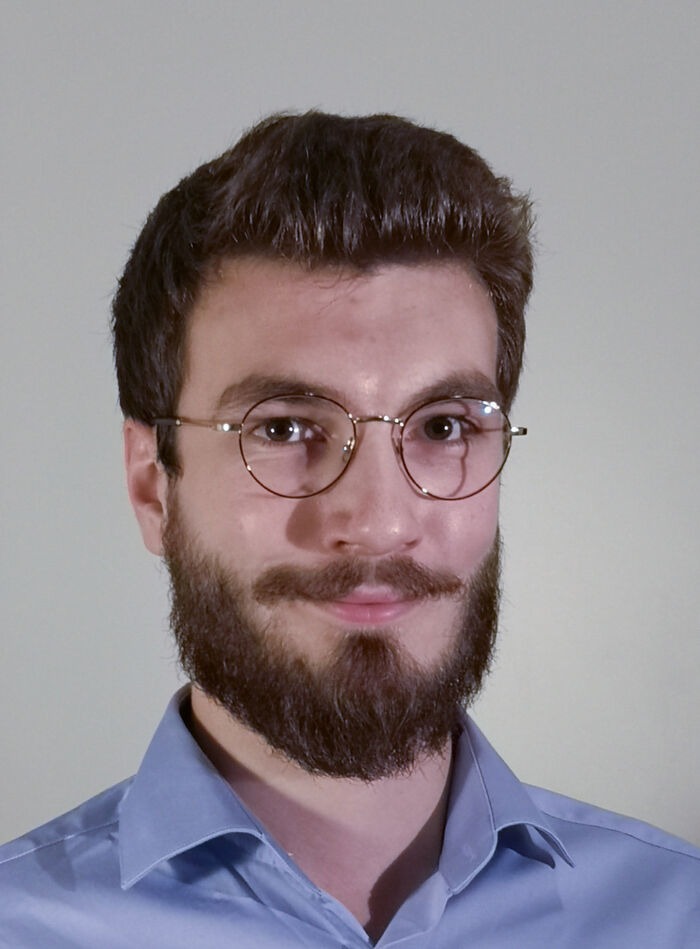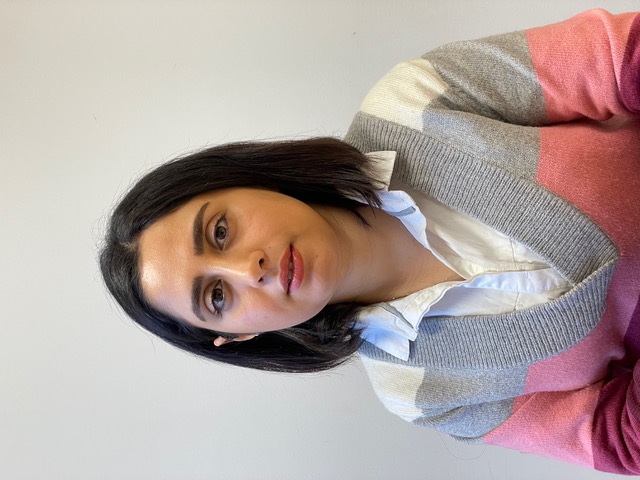Previous events - Page 25
Azusa Inoue, PhD candidate at Research Center for Nuclear Physics (RCNP), Osaka University, Japan.
Fano manifolds are complex projective manifolds having positive first Chern class. The positivity condition on the first Chern class has far reaching geometric and arithmetic implications. For instance, Fano manifolds are covered by rational curves, and families of Fano manifolds over one dimensional bases always admit holomorphic sections. In recent years, there has been some effort towards defining suitable higher analogues of the Fano condition. Higher Fano manifolds are expected to enjoy stronger versions of several of the nice properties of Fano manifolds.
In this talk, I will discuss higher Fano manifolds which are defined in terms of positivity of higher Chern characters. After a brief survey of what is currently known, I will present recent joint work with Carolina Araujo, Roya Beheshti, Kelly Jabbusch, Svetlana Makarova, Enrica Mazzon and Nivedita Viswanathan, regarding toric higher Fano manifolds. I will explain a strategy towards proving that projective spaces are the only higher Fano manifolds among smooth projective toric varieties.
Title: Estimating climate sensitivity in the presence of tipping points
Speaker: Peter Ashwin, University of Exeter
Meet up at Physics at the Library for a lecture about how network science is an indispensable tool from physics to medicine by Professor Albert-László Barabási, Northeastern University.
For millennia, origami and kirigami artists have used folds and cuts to create beautiful shapes from a simple sheet of paper. I will describe our recent scientific attempts to catch up with these remarkably imaginative arts phrased as inverse problems in physical geometry that aim to control the shape and rigidity of a thin surface. Using discrete operations that vary the number, size, orientation and coordination of folds and cuts, I will show how to create piecewise isometric kirigami and origami tessellations and control their local and global morphology and mechanical response, mixing experimental, computational and theoretical approaches.
Welcome to our GEOHYD Lunch Seminar Friday 17th of March @ 12:15 in Aud. 2, Geology building, or via video link using Zoom. The seminar is held by Bo Cao, GEO.
Carlos José Díaz Baso, Postdoctoral Fellow at Rosseland Centre for Solar Physics, University of Oslo.
Is it difficult to set aside time to write? The Academic Writing Centre organsises structured writing sessions for doctoral students.
QOMBINE seminar by Eric Bedos (UiO)
Welcome to our GEOHYD Lunch Seminar Friday 10th of March @ 12:15 in Aud. 2, Geology building or via videolink using Zoom. The seminar is helt by Frans-Jan Parmentier, MetOs/GEO.
After a brief introduction to the main physical characteristics of tsunami events, the recently developed Iterative Filtering technique is presented and applied to the decomposition of tsunami signals from pressure and tide gauges. It is shown how these signals are successfully decomposed into components of different physical origins. Then, the time-frequency representation of these time series is obtained by using the IMFogram algorithm, which computes instantaneous amplitudes and frequencies for the previously obtained components. Finally, possible applications to tsunami science are discussed, such as possible applications to real time detection in early warning context.
Nils-Ole Stutzer, PhD Fellow at Institute of Theoretical Astrophysics, University of Oslo.
Estimates of environmental extremes are needed for a multitude of applications. For example, buildings, roads, bridges and dams must be designed to withstand extreme precipitation and flooding events of a certain size. Obtaining such estimates requires a combination of statistical theory and environmental process understanding to overcome data deficiencies: data on extremes are by definition sparse and regulations often require estimates for events that have yet to be observed. We will present approaches to obtain consistent estimates across spatial locations and accumulation periods, and discuss a few open questions on this topic.
Welcome to our GEOHYD Lunch Seminar Friday 3rd of March @ 12:15 in Aud. 2, Geology building or via videolink using Zoom. The seminar is helt by Federico Covi, GeoHyd, UiO.
OceanSun’s floating solar island consists of a hydro elastic membrane attached to a flexible torus, providing a more cost-efficient alternative with natural cooling of the panels leading to increased efficiency. The current research focuses on the seakeeping characteristics of OceanSun’s FSPV concept specifically. Wave induced loads are of particular interest, as the feasibility of offshore installation strongly depends on environmental loads. Important responses of the membrane based FSPV are identified by the development of a global model based on linear potential flow theory, and linearly pre-tensioned membrane motions. Based on theory formulated by Grøn (2022), a modal analysis is used to describe the vertical displacement of the membrane-floater system. A numerical implementation of the theory in WAMIT is compared to experimental results from model-scaled tests.
Maryam Saberi, Researcher at Rosseland Centre for Solar Physics, University of Oslo.
Is it difficult to set aside time to write? The Academic Writing Centre organsises structured writing sessions for doctoral students.
Felleskollokvium by prof. Erik Adli, Dept. of Physics, UiO
SPARK Norway Educational Forum are monthly open meetings organized by UiO:Life Science and SPARK Norway partners.
QOMBINE seminar talks by Delphine Martres (University of Oslo) and Alexander Müller-Hermes (University of Oslo)
Nakajima quiver varieties are a class of combinatorially defined moduli spaces generalising the Hilbert scheme of points in the plane, defined with the aid of a quiver Q (directed graph) and a fixed framing dimension vector f. In the 90s Nakajima used the cohomology of these varieties (in fixed cohomological degrees, and for fixed f) to construct irreducible lowest weight representations of the Kac-Moody Lie algebras associated to the underlying graph of Q. Since the action is via geometric correspondences, the entire cohomology of these quiver varieties forms a module for the same Kac-Moody Lie algebras, suggesting the question: what is the decomposition of the entire cohomology into irreducible lowest weight representations?
In this talk I will explain that this question is somehow not the right one. I will introduce the BPS Lie algebra associated to Q, a generalised Kac-Moody Lie algebra associated to Q, which contains the usual one as its cohomological degree zero piece. The entire cohomology of the sum of Nakajima quiver varieties for fixed Q and f turns out to have an elegant decomposition into irreducible lowest weight modules for this Lie algebra, with lowest weight spaces isomorphic to the intersection cohomology of certain singular Nakajima quiver varieties. This is joint work with Lucien Hennecart and Sebastian Schlegel Mejia.









